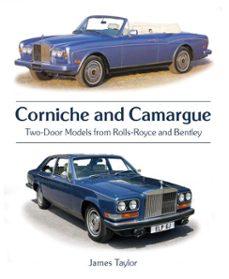Imprescindibles
Ficción
No Ficción
Ciencias y tecnología Biología Ciencias Ciencias naturales Divulgación científica Informática Ingeniería Matemáticas Medicina Salud y dietas Filología Biblioteconomía Estudios filológicos Estudios lingüísticos Estudios literarios Historia y crítica de la Literatura
Humanidades Autoayuda y espiritualidad Ciencias humanas Derecho Economía y Empresa Psicología y Pedagogía Filosofía Sociología Historia Arqueología Biografías Historia de España Historia Universal Historia por países
Infantil
Juvenil
#Jóvenes lectores Narrativa juvenil Clásicos adaptados Libros Wattpad Libros Booktok Libros de influencers Libros de Youtubers Libros Spicy Juveniles Libros LGTBIQ+ Temas sociales Libros ciencia ficción Libros de acción y aventura Cómic y manga juvenil Cómic juvenil Manga Shonen Manga Shojo Autores destacados Jennifer L. Armentrout Eloy Moreno Nerea Llanes Hannah Nicole Maehrer
Libros de fantasía Cozy Fantasy Dark academia Hadas y Fae Romantasy Royal Fantasy Urban Fantasy Vampiros y hombres lobo Otros Misterio y terror Cozy mistery Policiaca Spooky Terror Thriller y suspense Otros
Libros románticos y de amor Dark Romance Clean Romance Cowboy Romance Mafia y amor Romance dramatico Romcom libros Sport Romance Otros Clichés Enemies to Lovers Friends to Lovers Hermanastros Slow Burn Fake Dating Triángulo amoroso
Cómic y manga
Novela gráfica Novela gráfica americana Novela gráfica europea Novela gráfica de otros países Personajes, series y sagas Series y sagas Star Wars Superhéroes Cómics DC Cómics Marvel Cómics otros superhéroes Cómics Valiant
eBooks
Literatura Contemporánea Narrativa fantástica Novela de ciencia ficción Novela de terror Novela histórica Novela negra Novela romántica y erótica Juvenil Más de 13 años Más de 15 años Infantil eBooks infantiles
Humanidades Autoayuda y espiritualidad Ciencias humanas Economía y Empresa Psicología y Pedagogía Filosofía Historia Historia de España Historia Universal Arte Cine Música Historia del arte
Ciencia y tecnología Ciencias naturales Divulgación científica Medicina Salud y dietas Filología Estudios lingüísticos Estudios literarios Historia y crítica de la Literatura Estilo de vida Cocina Guías de viaje Ocio y deportes
Preventa de ebooks de ingeniería
Categorias
Filtros
Del 1 al 4 de 4
Pitkin 9780752491837
For centuries it was far more efficient to move goods by water than by road. The end of the 18th century saw 2,000 miles of canal built in Britain: the Canal Age had begun.Constructing the canals consisted of a great deal of hard work and manual labour, headlines by individual names but mostly done by tens of thousands of men across Britain called navvies. Initially much like carting on roads, boating on canals grew as canal systems expanded across the country, but still required long hours, hard work and specific skills.This detailed and informative guide tells the story of the boats and their workers. From the professional leggers who walked boats through tunnels to lock keepers to canal children running ahead of the boats, original photographs and artefacts such as tug tickets and timetables show what life was like on the canal.A classic Pitkin guide to immerse readers in the world of canals in Britain, including a list of museums and heritage centres to provide further insight into the history of the canal network.
Ver más
eBook
TAYLOR, HARRY
The History Press 9781837050543
One day I will look back and laugh, but not just yet. Harrys life had been stuck in neutral until he discovered Peggy lying in a field. It then promptly went into reverse. Is Peggy the romantic interest of this story or two tons of automotive scrap metal? Harrys subsequent restoration project takes us on a journey through a life that has more bumps than the A12 and a cast of eccentric characters who are caught up in the joy of attempting the impossible, just for the sheer love of it. This is the story of one mans attempt to restore an Austin 1100. Along the way it also becomes the story of one mans attempt to restore himself, and as anyone whos ever tried their hand at restoration knows, you cant rebuild something without taking it apart first. This book is for anyone who wants to follow their dream but has forgotten to take out breakdown insurance for it.
Ver más
eBook
PAVLISCAK, PAMELA
Elliott & Thompson 9781783967995
The existential toolkit for readers to regain control of their emotional lives in the digital age.
Ver más
eBook
The Crowood Press 9780719845840
The tradition of the two-door luxury car began early in the history of the Rolls-Royce and Bentley marques. In the 1950s, its most famous realisation was the Bentley Continental, but that name was not revived when the new generation of monocoque models arrived in the mid-1960s. Instead, there were near-identical Rolls-Royce and Bentley variants of a stunningly attractive two-door design that came as either a saloon or a drophead coupe.From 1971, the range gained a clearer identity of its own as the Corniche, with a larger and more powerful 6.75-litre V8 engine. The Corniche remained in production for nearly a quarter of a century, during which time it quite literally stood alone as a symbol of wealth and as the epitome of luxury motoring.The drophead models were always the stronger sellers, and Rolls-Royce drew up plans for a new two-door luxury car to replace the Corniche saloons. In practice, the 1975 Camargue would establish its own market, and the closed Corniche stayed in production until 1980. The Camargue was both glamorous and rare, but it had a quite unmistakable presence and gained its own fame as the worlds most expensive production car.This book tells the full story of these iconic ranges, and will be essential reading for owners and admirers of the immortal Corniche and the controversial Camargue.
Ver más
eBook
Del 1 al 4 de 4

![harry potter y el cáliz de fuego (harry potter [ediciones ilustra das interactivas] 4)-j.k. rowling-9788419868497](https://imagessl7.casadellibro.com/a/l/s5/97/9788419868497.webp)

























